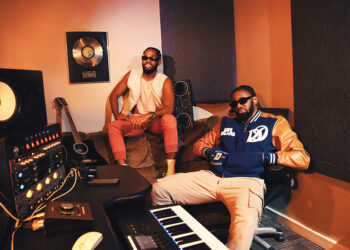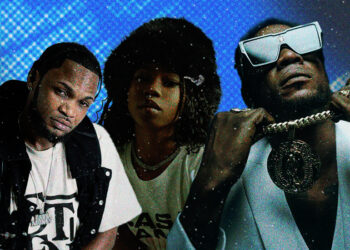Within the last decade, Trinidad & Tobago has experienced a musical revolution that has harnessed the emergence of new genres and subgenres in addition to the more popular Soca and Calypso. Trinidadian music, while being celebrated worldwide, is becoming increasingly known regionally for its emphasis on violence and gang-related activity. This has become a deterrent to some fans and music enthusiasts. In response to the criticisms, the sub-genres of Zess & Steam have emerged to the forefront.
Steam is a hyper-sexual, fun sound that glorifies the divinity of female sexuality and female liberation. The Pioneer of this sonic movement is recording artist, Boidingo.
Speaking to CARIB VOXX, Boidingo noted, “I have Been doing music from since I was born as I came out the womb crying. This to some is music to the ears. I decided to take it professionally and as a main source of income from the age of 19, I started my own studio with some friends in my bedroom and this is where my break-out hit Warm Up came from.”
With massive hits under his belt such as, Jump It Jump It, Secret and Hot & Steamy, it would be egregious not to extol Boidingo’s immense contribution to the sound.
On the surface, Boidingo could be ostracized for its raunchy lyrics but there is a thoughtfulness in the way he approaches his art. Born Brian Luces, the diverse musical palette he grew up with in the Caribbean all influences his sound today. In his music, both sonically and lyrically, traces of Afrobeats and Baile Funk can be identified.
Baile Funk is a Brazilian genre of music that bares very similar criticism in Brazil to Zess in Trinidad and even Dancehall in Jamaica. It’s also known for its playful yet sexually explicit lyrics, designed for female enjoyment. In the introduction of many of his songs, Boidingo can be heard saying, “Rio De Janiero,” which is a playful nod to the influence Brazil and by extension, Baile Funk has on his music.
Describing the creation of the popular Zess sound today Boidingo explained, “I enjoyed listening to Brazilian hip-hop and decided to experiment with it in the Trini Dancehall culture by mixing the Brazilian drum patterns with some Dancehall instruments. This made me realize that this sound can be something new and interesting and that experiment created the drum pattern famous in the Zess music these days.”
“Before making it popular me and my manager, Mr. Harpylyef, would have been ignored and turned away because promoters, radio stations, and many other personnel would say it [the music] is too raw or rude or slack and they can’t play it or give it a forward,” he explained. “We kept on pushing and realized how powerful social media is and used that to get it to the ears of the people. From there, the people accepted Zess and many other parties, and everyone who turned us away before accepted it and could not ignore it no more,” Boidingo noted triumphantly.
Boidingo concluded that “After hearing it play for the first time on the radio after Selectah Kerry found it and created a censored version, other DJs gave it a forward I realized that I should never focus on the negative that people say but rather focus on the positive, the goal and keep pushing.”











